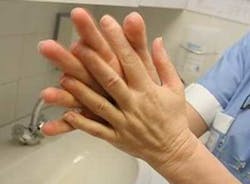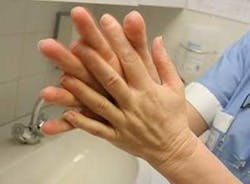Dental assistants: The glue that holds dental teams together
Team tēm : A group of people with a strong sense of mutual commitment who function synergistically using a full set of complementary skills in order to accomplish a task, complete a job, or realize a goal.
From the late 1800s through the mid-20th century, we recognized a small team of individuals as our total oral health-care experts – the family dentist and his dental assistant, who were later joined by the dental hygienist and the dental laboratory technologist. This team served all the needs of dental consumers.
Then time marched on and our knowledge of the human body and disease processes increased. We realized that premium oral health care should be multifaceted. Patients’ needs became more complex as knowledge and technology related to oral health care expanded. With enlightenment we saw the emergence of dental specialties such as oral and maxillofacial surgery, periodontics, endodontics, orthodontics, prosthodontics, and pedodontics. Today, dental practitioners continue to meet the intricate needs of dental consumers by further narrowing the scope of practice to such sciences as oral implantology, cosmetic dentistry, dental sleep medicine, and oral and maxillofacial radiology.
Through the evolution of these many facets of oral health care, there has been one constant – dental assistants. Practitioners, regardless of their specialty, cannot practice alone. A skilled, multitasking dental assistant is a necessity in order to meet the needs of patients and the practice. Today, dental assistants are doing more than just comforting patients, suctioning mouths, and setting-up/tearing down treatment areas. Dental assistants with advanced training are now charged with performing many of the complex tasks that would otherwise prevent the dentist from seeing other patients.
The dental assistant is an enduring member of the dental team regardless of the team’s narrow focus. For oral health care of the 21st century, not just any dental assistant will do. Dentists are demanding the skills of highly specialized assistants and prefer to employ team members who come to the practice with formal training and all required state credentials. It is becoming less common for dentists to offer on-the-job training to individuals without prior dental education, or at least a minimal amount of dental experience. Today’s dentist does not have the time to be an educator.
While a dental assistant’s advanced intraoral and laboratory skills are of great value to today’s high-volume practitioner, the age of communication has enlightened patients with concerns about safety. Recently, and most important to dental consumers, is the concern regarding dental infection control practices. It has become evident to the ADAA that due to the threat of emerging communicable diseases that are potentially fatal, dental assistants – the infection control specialists in the oral health-care setting – must have advanced knowledge of the disease process, and of the prevention of disease transmission in the oral health-care environment. Sadly, formal training in advanced concepts of infection control is still not a requisite in most states, thus a disparity in the standard of care continues to exist from practice to practice. While a few states are considering a rigorous formal training requirement for those who perform infection control procedures in oral health-care settings, it has come to the attention of the ADAA that more can be done to ensure that quality oral health-care services are safely delivered to dental consumers.
In late 2013, the ultimate dental team emerged. The ADAA approached the Dental Assisting National Board (DANB,) the Organization for Safety, Asepsis, and Prevention (OSAP,) and the American Dental Education Association (ADEA) to form an alliance for the purpose of developing a standardized curriculum for infection control education. A secondary goal is to propose a means of formal competency assessment for oral health-care professionals responsible for performing infection control procedures in oral health-care settings. Very quickly other organizations shared their interest in participating with the “Founding Four” in this significant endeavor.
Currently, this Infection Control Consortium benefits from the added participation of representatives from the American Dental Association (ADA,) the Academy of General Dentistry (AGD,) the Centers for Disease Control and Prevention (CDC,) and the American Association of Dental Boards (AADB.) Each of these organizations agrees that it is important for oral health-care workers responsible for performing infection control procedures to be educated in a core curriculum of infection control principles based on relevant OSHA regulations, CDC guidelines, and other relevant national standards. It is the ultimate goal for this infection control consortium to enhance the protection of the public and the dental team.
Based on that premise, the ADAA encourages immediate action. ADAA advocates that all dental assistants adhere to current CDC recommendations, OSHA standards, and state regulations, with documented proficiency in dental infection control protocols. We maintain this be demonstrated by passing the DANB’s Infection Control Examination. The ADAA further advocates the adoption of standardized mandatory federal and state requirements for dental infection control training and credentialing of oral health-care workers. All dental assistants and dental assistant students are encouraged to join the ADAA team in order to advance the practice of dental assisting toward the highest standards of performance. Together, as a team, we share in the responsibility for quality oral health care delivery to all.
There is no doubt that in the 21st century, dentistry remains a team-based profession. Quality oral health care continues to require the services of many highly skilled and knowledgeable individuals, because a lone practitioner cannot single-handedly be everything to everyone. For the team to be successful, each member must function with a level of interdependence and share in accountability, and demonstrate a devotion to success.
To ensure the team functions synergistically with a strong sense of mutual commitment, each team member must possess a full set of complementary skills. As dental assistants, we are an integral part of the dental team, sharing in the responsibility for the delivery of quality oral health-care to all. The team is only as strong as its weakest member; therefore it is up to us to ensure strength in our own skillss, knowledge, and commitment to excellence, because those are the premium qualities necessary for the team’s goals to be realized.
Kimberly Bland, CDA, EFDA, MEd, is the new ADAA President for 2014-2015.


